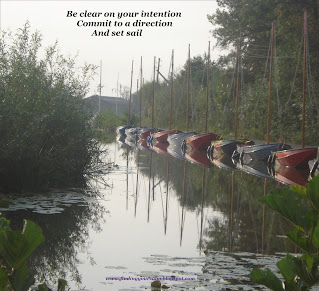Do you
believe you can only do things one way?
Do you
believe that there’s a limit to what you can learn?
Do you
believe you are only capable of doing certain things?
A common
term these days is ‘Growth Mindset’. It's the new thing to be and to have, but
what exactly is it?
Mindset
simply means the way you think or view things. Your mind is set a certain way;
you think about things a certain way, or see them from a certain perspective,
and your actions are dictated by what you think.
A ‘Growth
Mindset’ means you are able to change your perception or view point and expand
it to take on new ideas, concepts, and ways of doing things.
“If
my mind can conceive it and my heart can believe it, I know I can achieve it.”
- Jesse Jackson
In
contrast the term ‘Fixed Mindset’ means you are limited by what you believe you
are capable of achieving or thinking - you are fixed in your thinking.
If you
believe in certain ways of doing things or there is a limit to what you can
learn, and are rigid in how you do them, and/or don’t believe there is another
way for you, then you have a fixed mindset and you find it difficult to
conceive that you could change that. This fixed thinking means you can’t grow
or expand in what you can achieve or learn - or at least you don’t think you
can.
“Limitations
live only in our minds. But if we use our imaginations our possibilities become
limitless.” - Jamie Paolinetti
In life
this can either help or hinder, and it shows up in different ways.
You might
have a dream about something you want to do, but if you don’t believe it is
actually possible for you to achieve it, you won't take action to make that
dream happen. It restricts you, and this can leave you unhappy, depressed, even
anxious. You might even think there is no point in your life, leading to even
darker thinking.
How we
think about what we can and can’t do is affected by what others say and tell
us, whether it’s parents, teachers or peers. It’s also by what we experience
and what meaning we attach to that experience - whether it is something
positive or negative – and this in turn can change the decisions when we make
future choices.
“Growth
mindset is based on the belief that your basic qualities are things you can
cultivate through your efforts.” - Carol
Dweck
A mindset
is a dialogue in our heads. We create this dialogue through our experiences and
our feelings, and through what we hear and see externally; through how people
treat us and respond to us.
If enough
people tell us there is something wrong with us we might then believe it to be
true, restricting and treating ourselves accordingly. If they tell us we can’t
do something enough times, we might believe it.
But we
can stop believing it by literally changing our minds. It’s all down to our internal
dialogue. Nothing externally can change that, only we can.
“Change
your thoughts, change your life.” - Wayne
Dyer
We can
start this by remembering these three things:
1.) You
are not your thoughts
Thoughts
are your minds way of processing your day, you don’t need to let them dictate
how you feel. You can choose which thoughts to engage with and which ones to
discard. But the thoughts you think the most in your conscious mind will feed
what your subconscious repeats and delivers into the conscious mind, so the
more you interrupt negative thoughts by challenging and replacing them with
accurate, ‘true’ thoughts, the more you will train your subconscious into only
throwing up helpful, supportive thoughts that will help you open up to what you
really want to achieve.
2) You
always have a choice
You can
not change or control anyone or anything outside yourself. You can only control
how you choose to react, and that is always a choice, whether you are aware of
it or not (often we are not). You also don’t have to justify any of your life
choices or actions either – a common misconception in our society. Only you need
to be sure about what you are doing, and leading from the heart. If you are
confident in your choices, those around you will be confident too.
3.) What
you believe is how you live
The word
'believe' has two other words in it: 'be' and 'live' so what we believe is what
we be and how we live. The world is open to you if you believe it is. You can
achieve anything you want if you believe you can achieve it. You are only
limited by what you believe is possible, and that is fed by your mind and
thoughts.
Our internal
dialogue can limit us if it is negative: we won’t believe we can do all the
things we want to do, no matter how much someone else says we can, or what we
witness others doing. Only if we believe it ourselves will we be able to
achieve it.
We can
feel restricted or we can feel limitless, the choice is ours.
Thus our
minds are either fixed or growing - the choice is ours.
Whether
you believe you can, or believe you can't, your right. - Henry Ford
Personally
I like to believe we can change the stars!
 One Of Us Has To Go by Katja Schulz
One Of Us Has To Go by Katja Schulz









